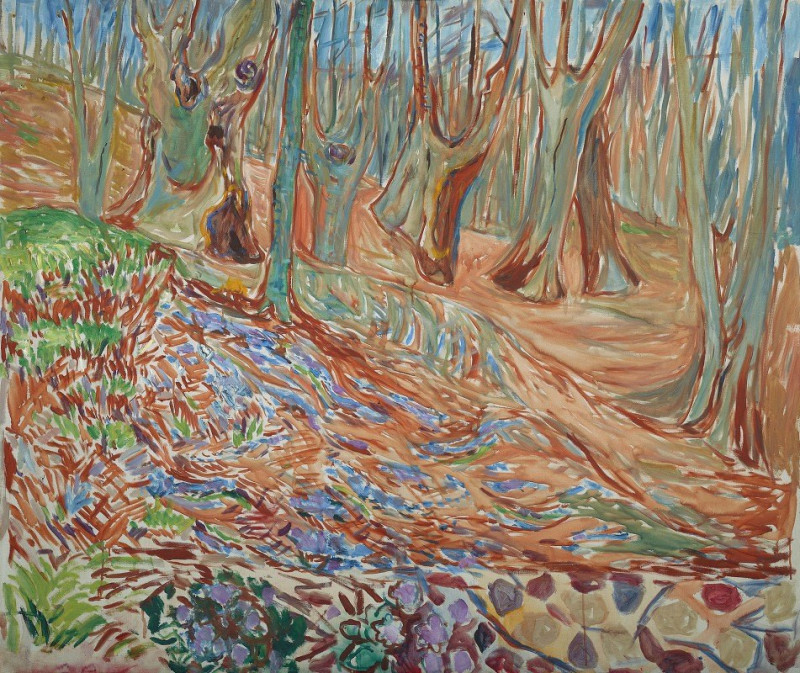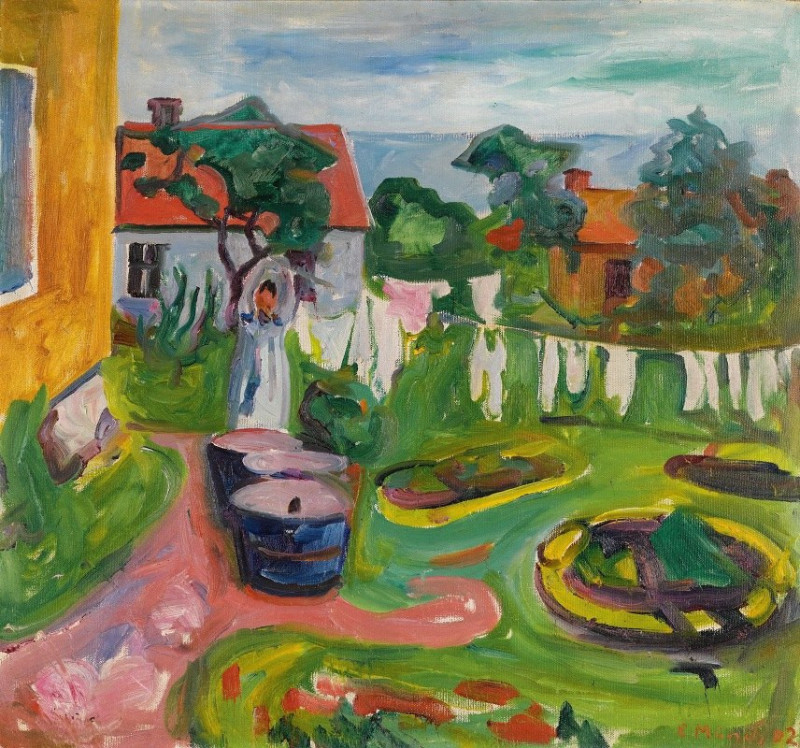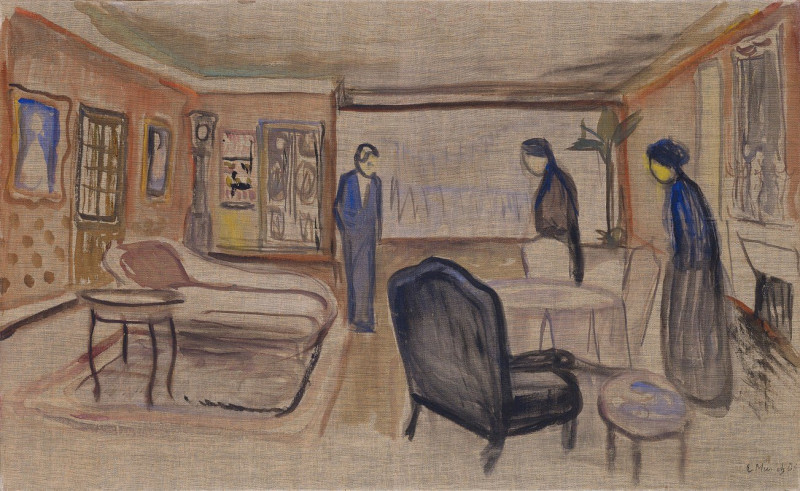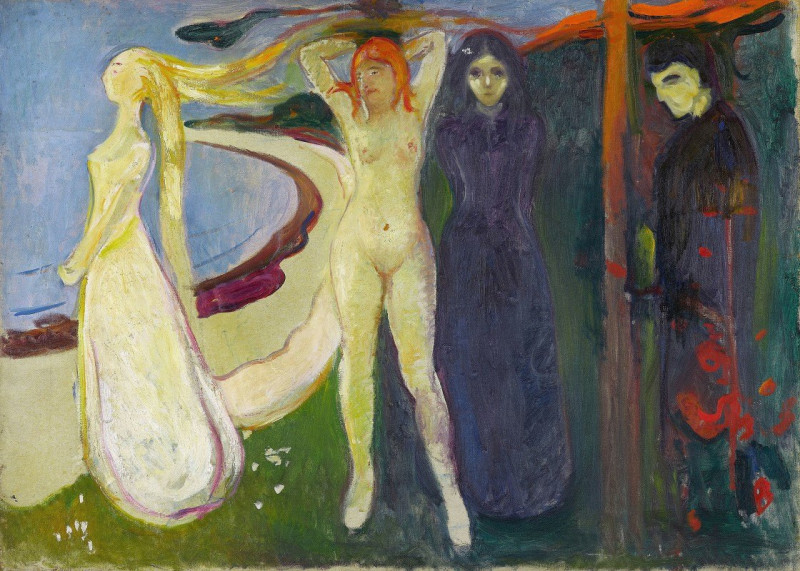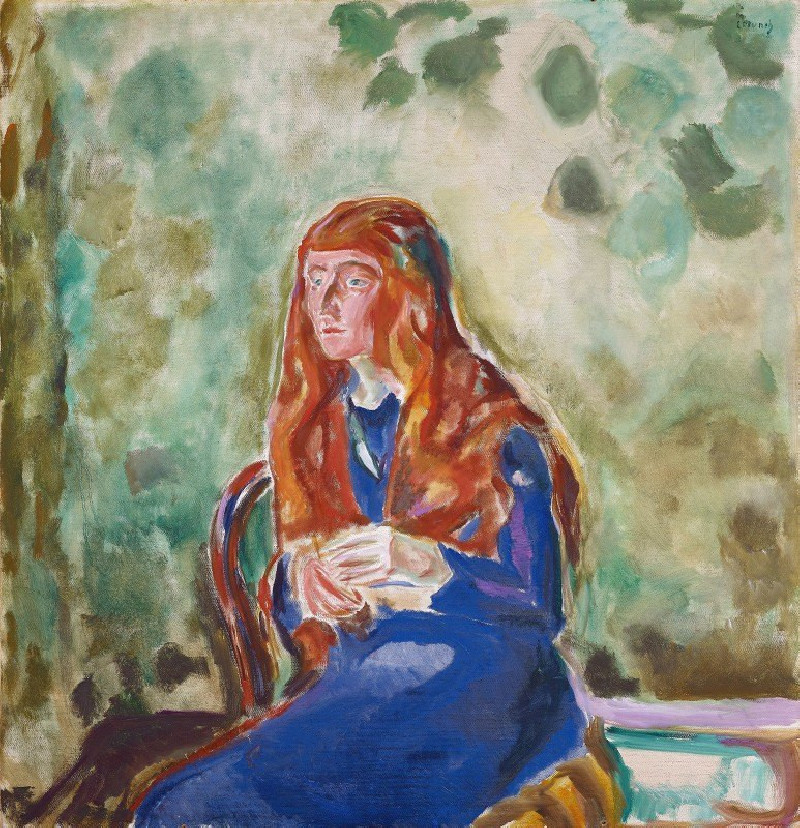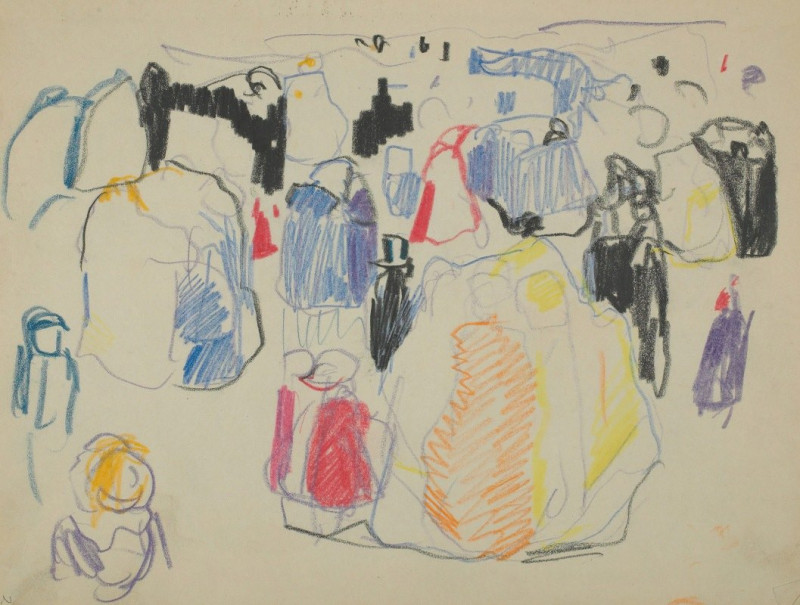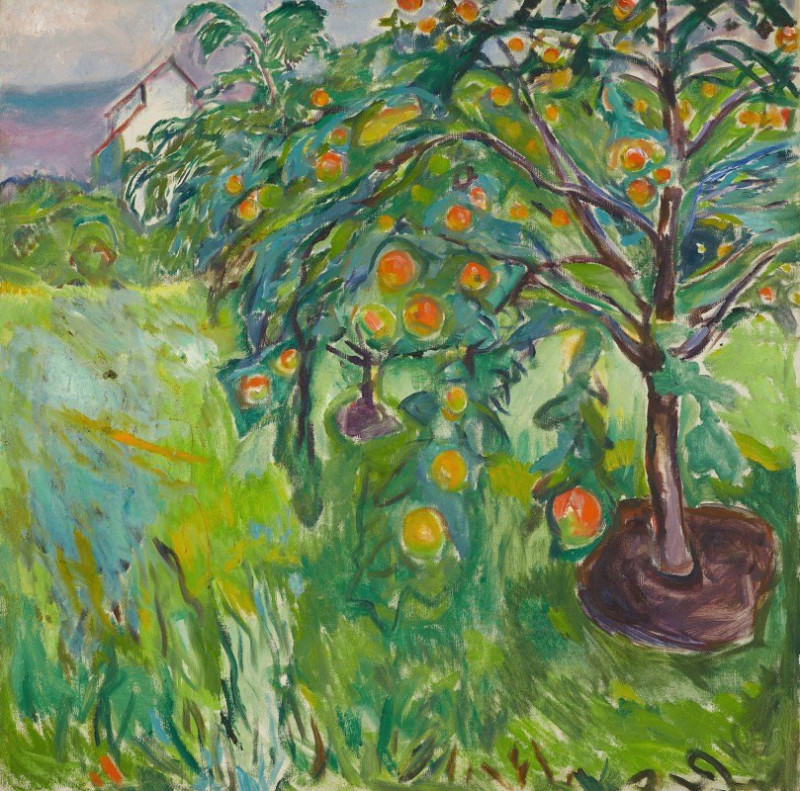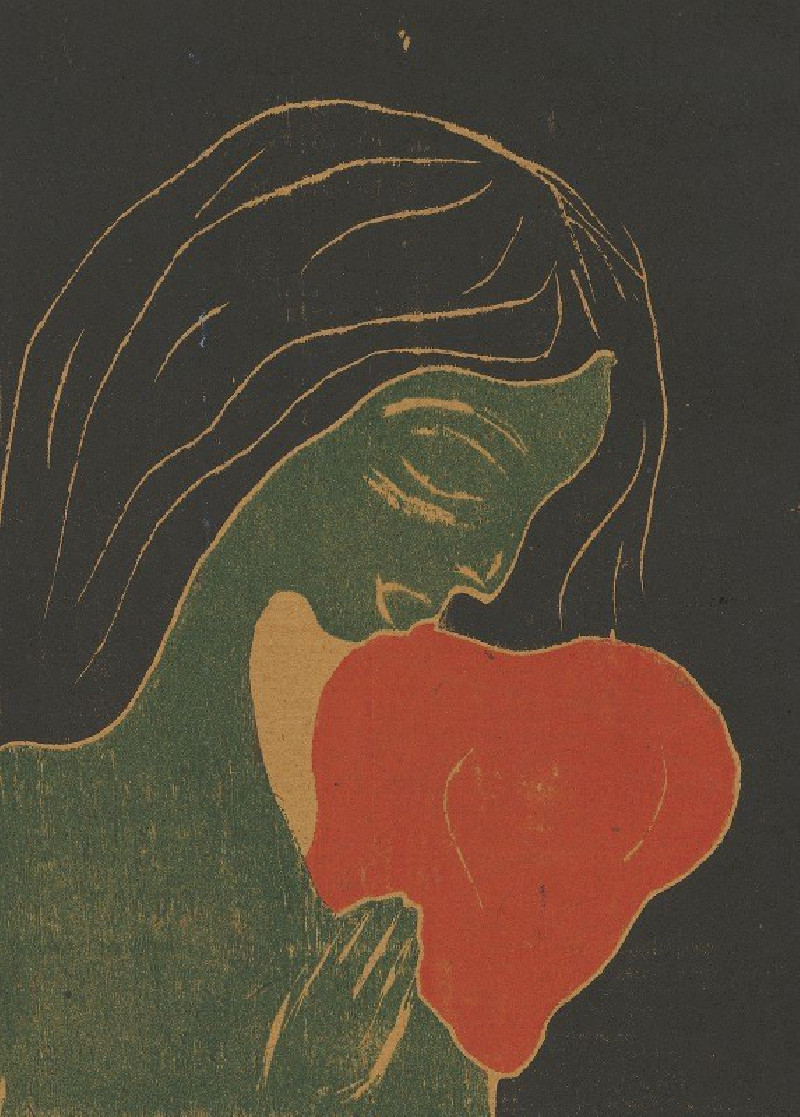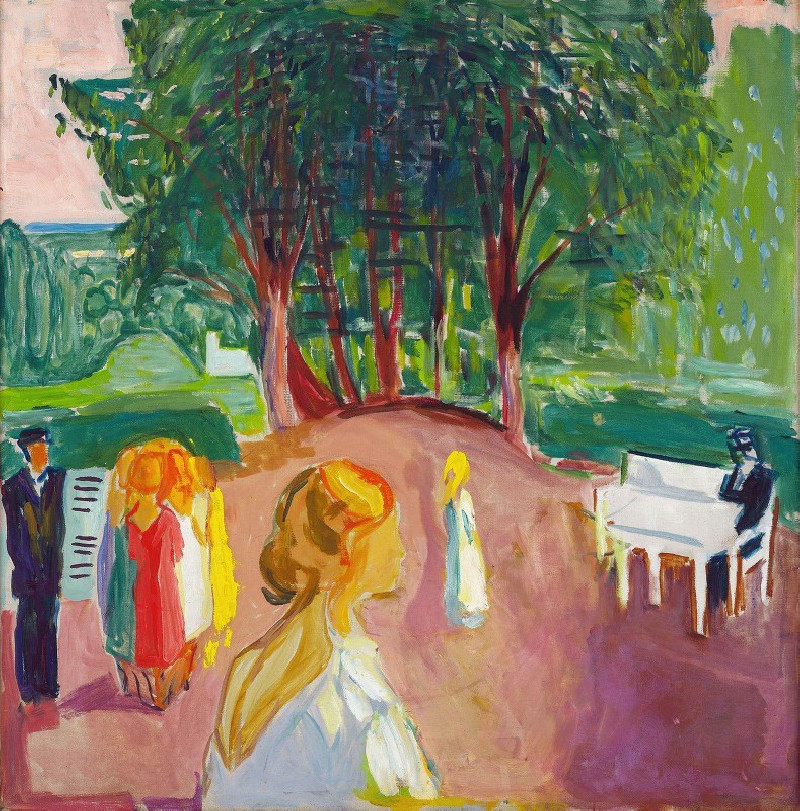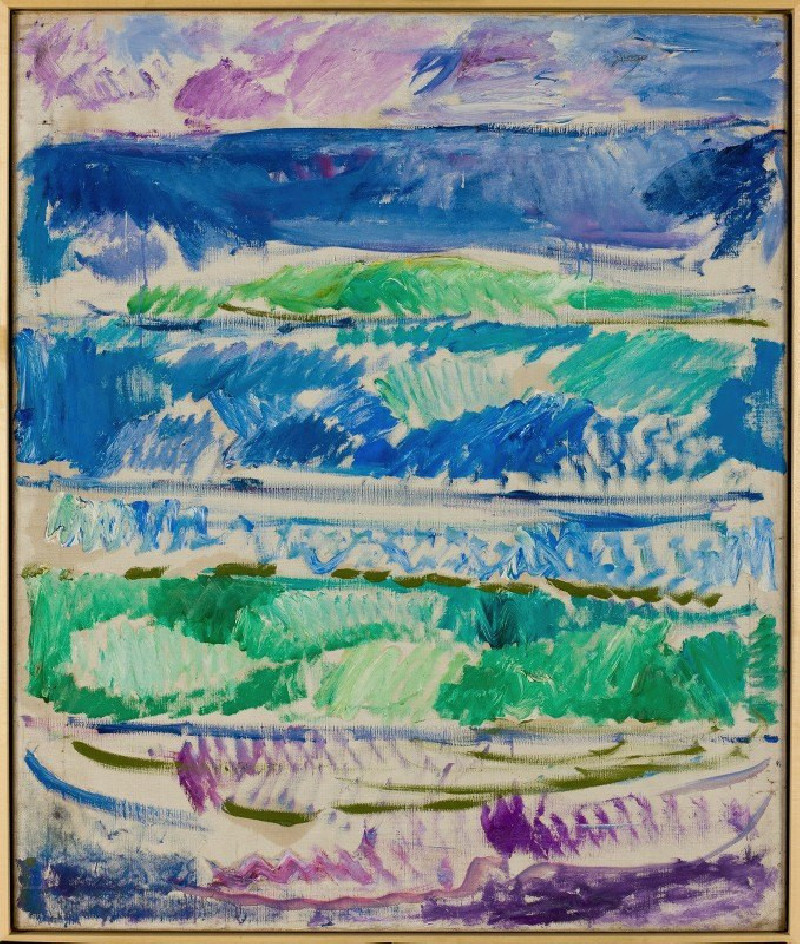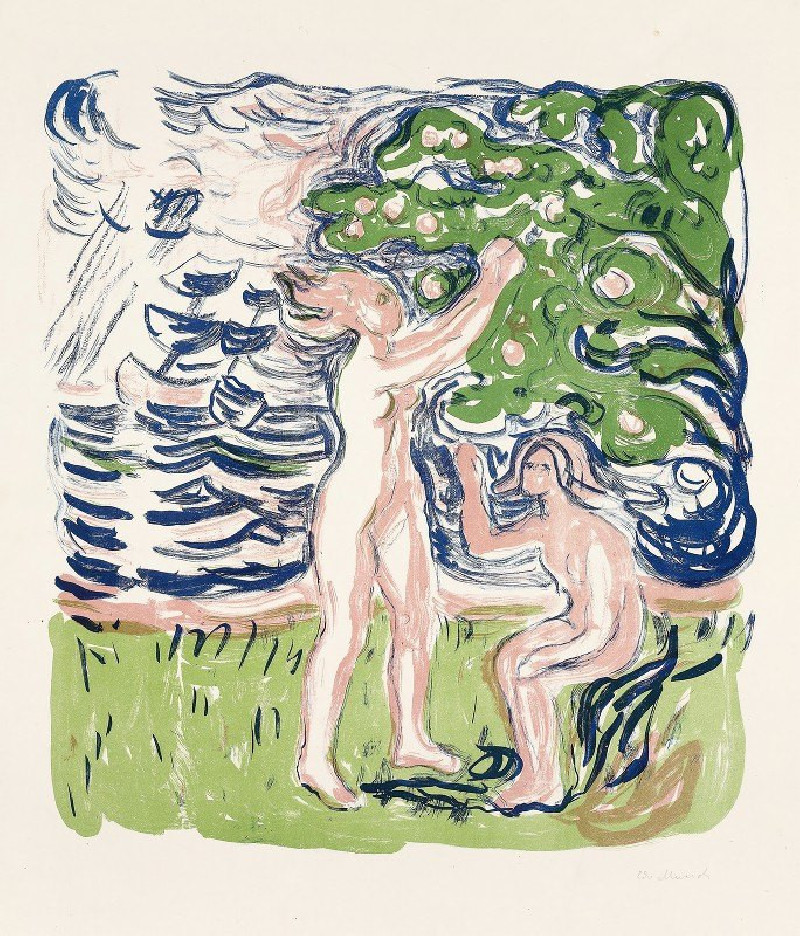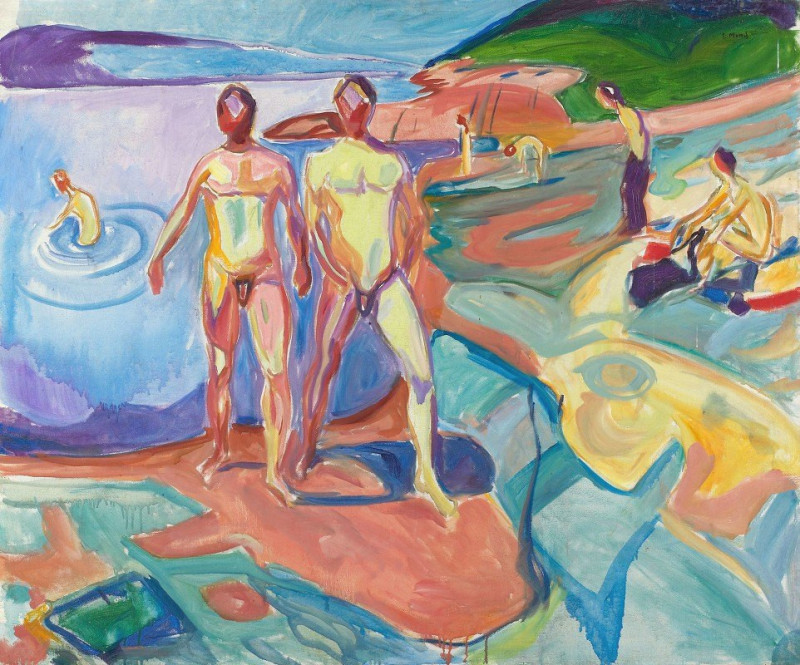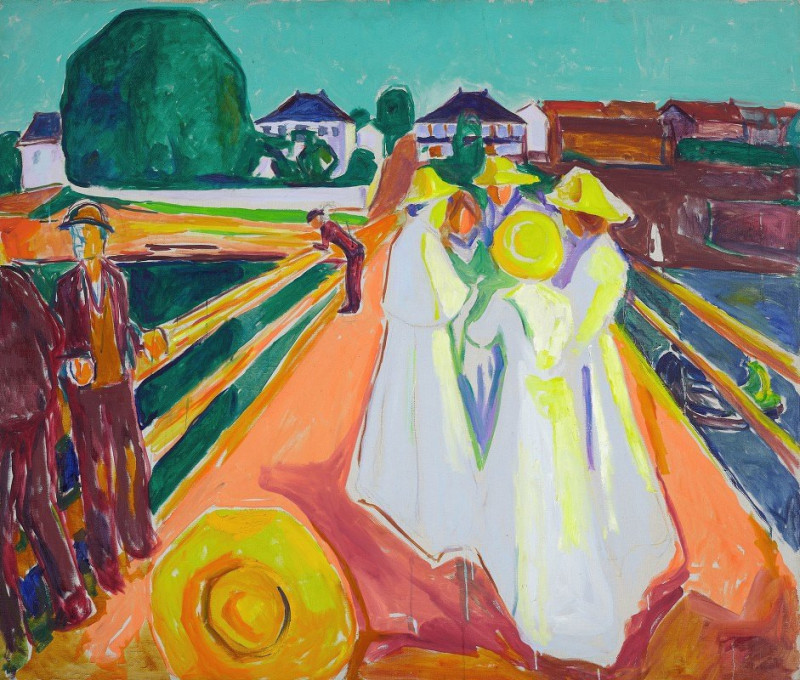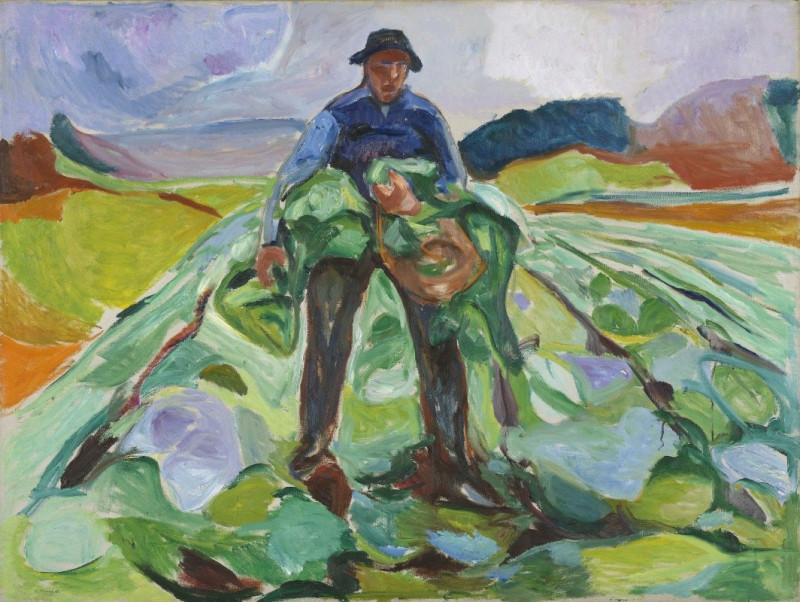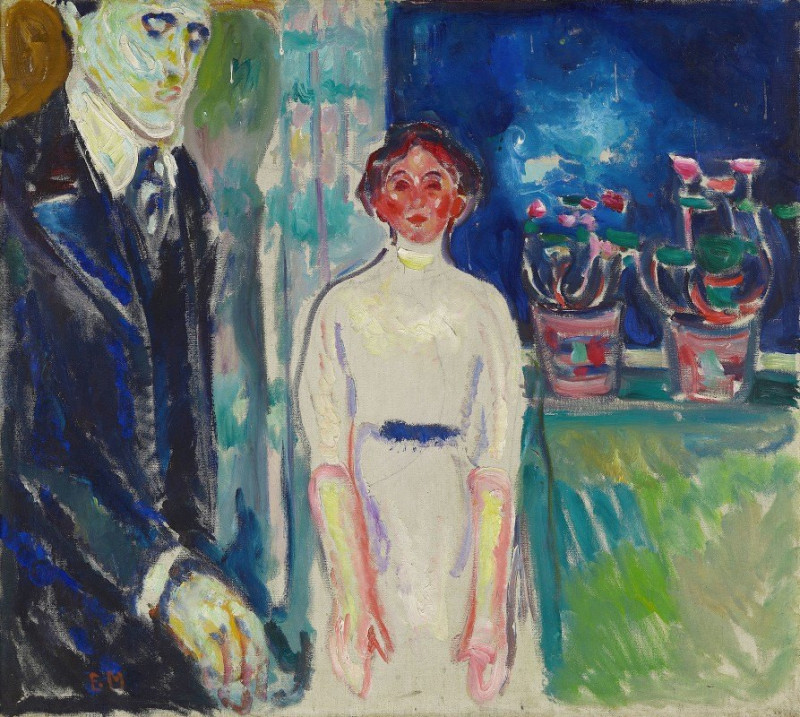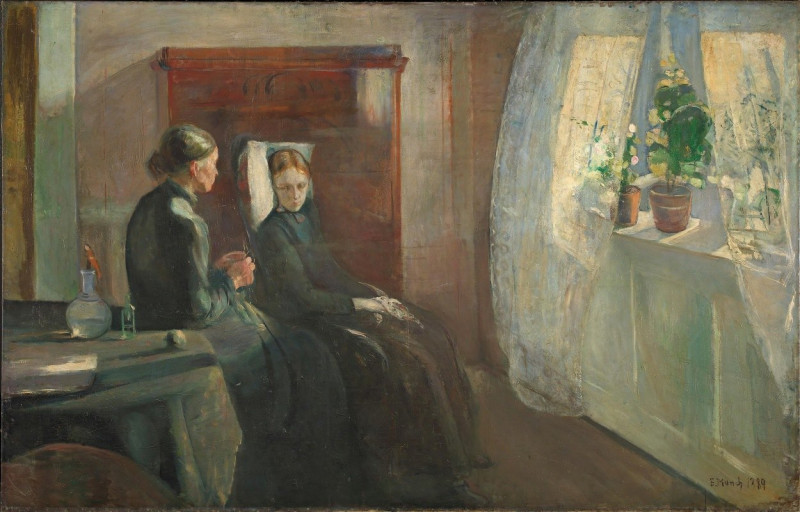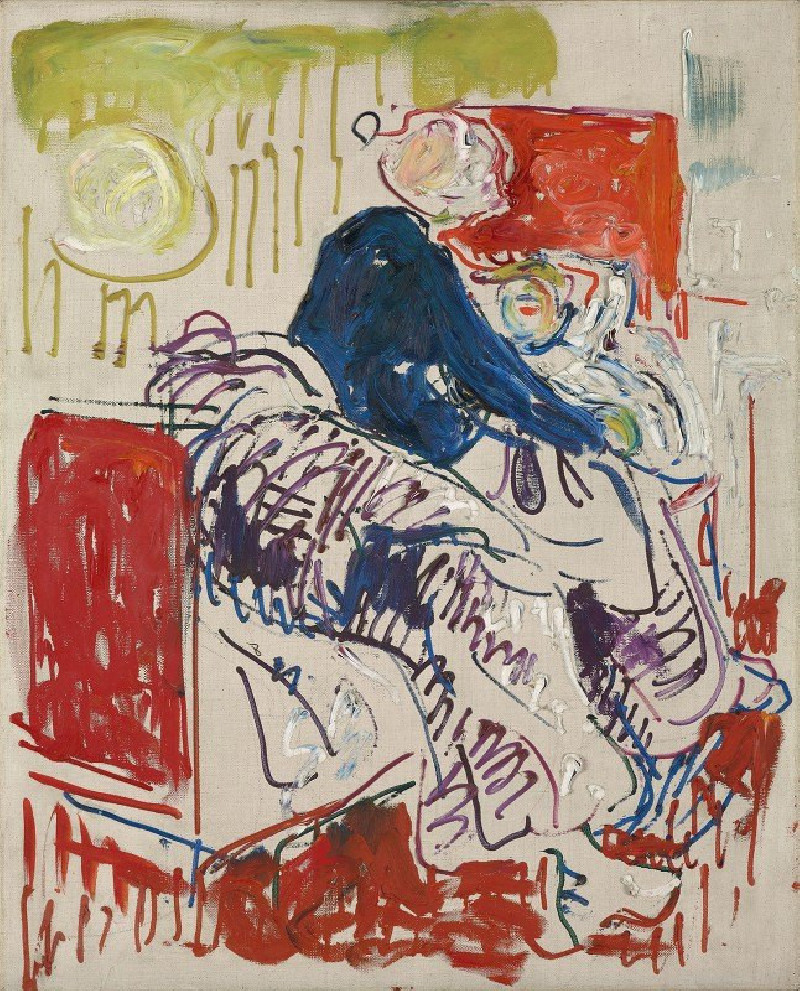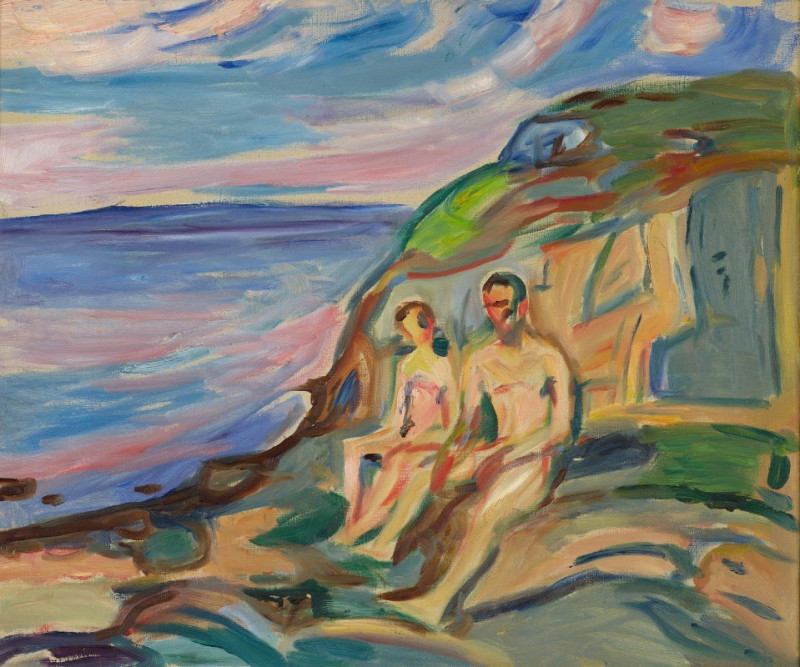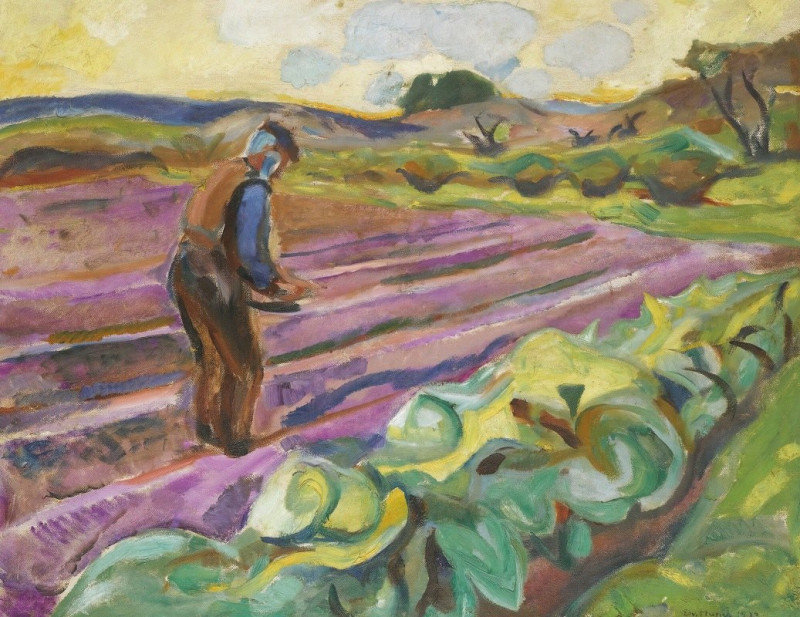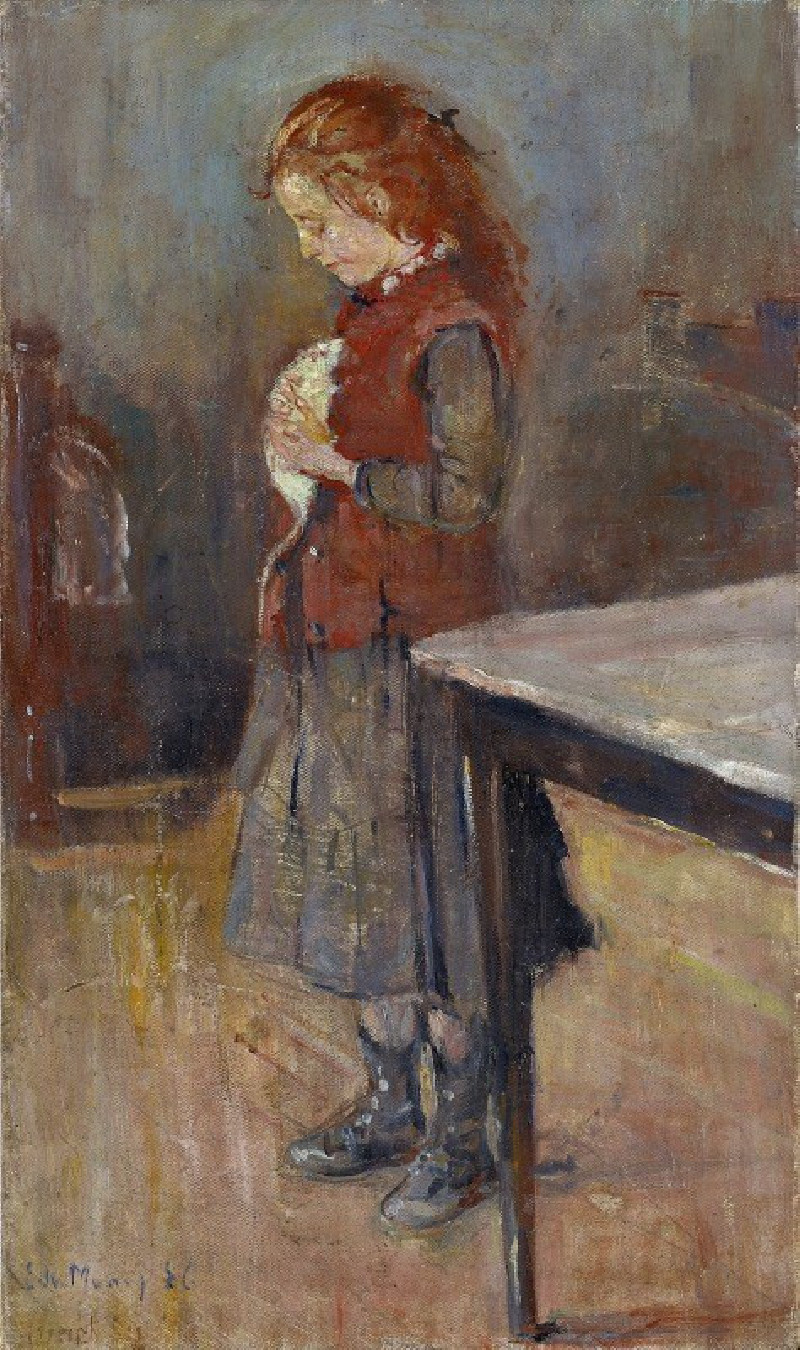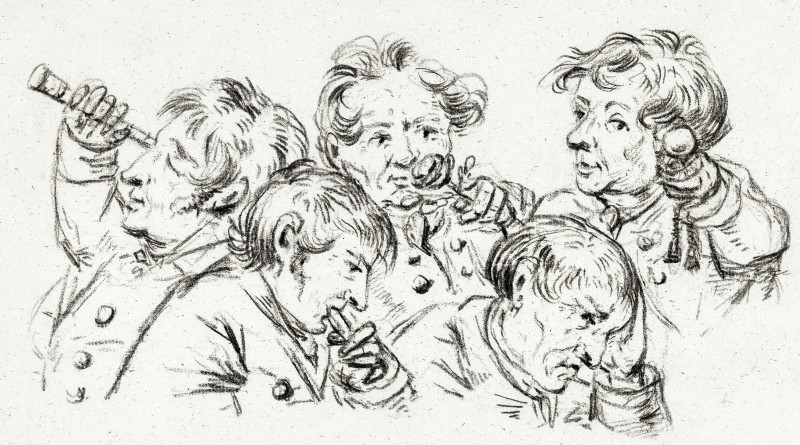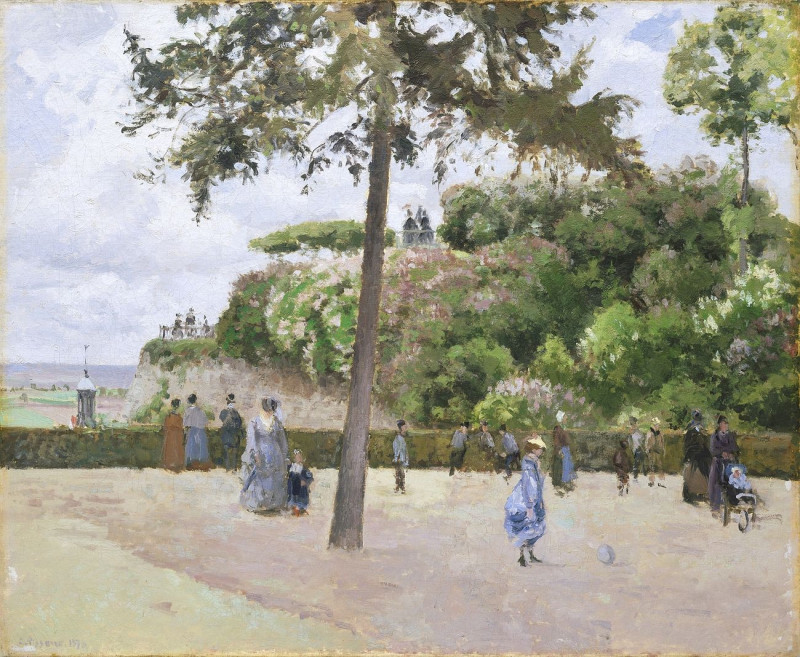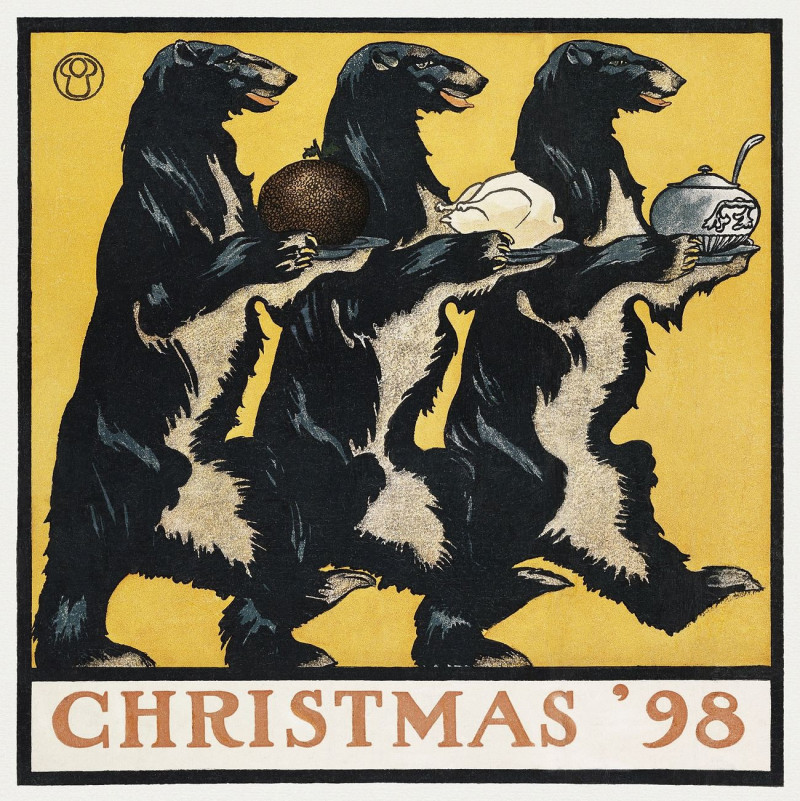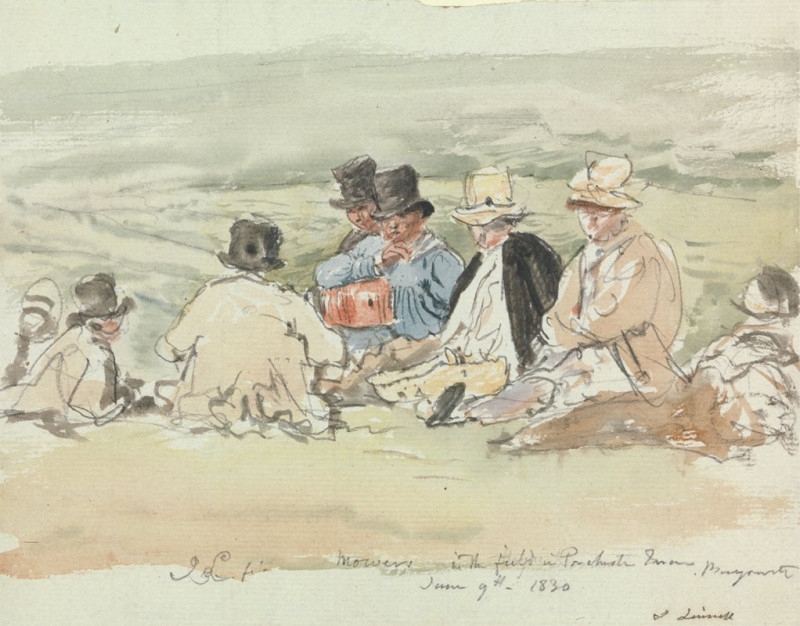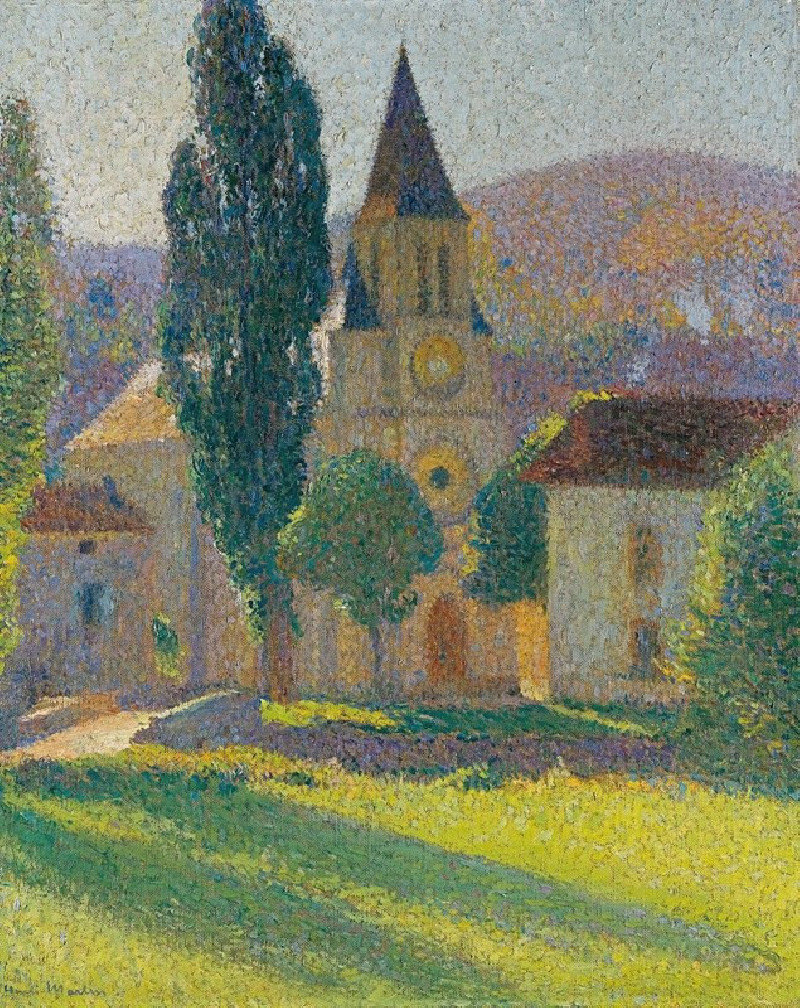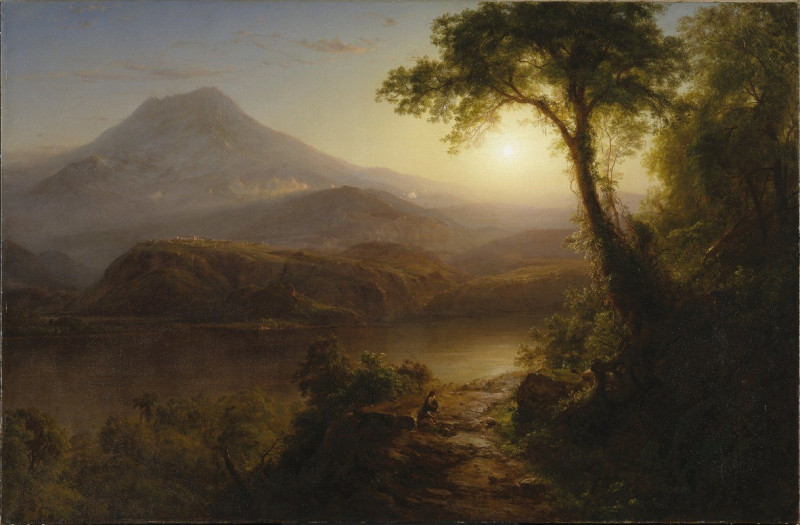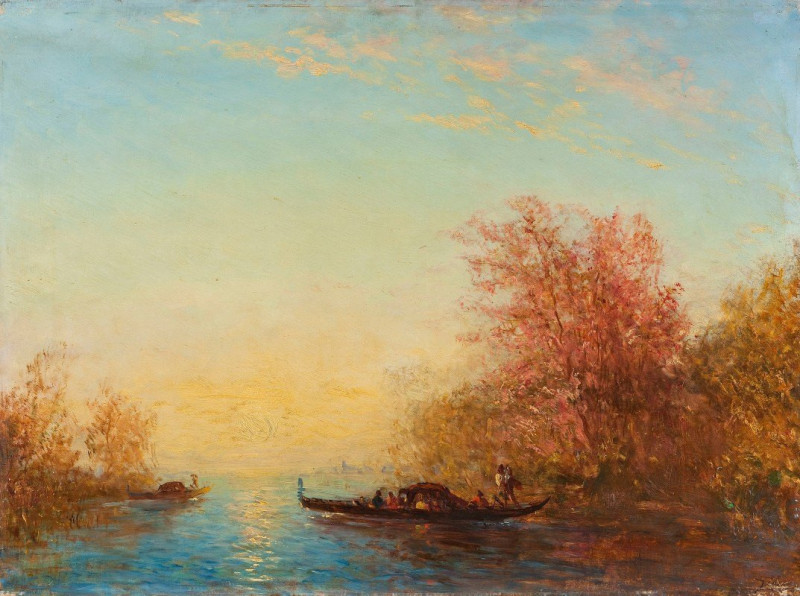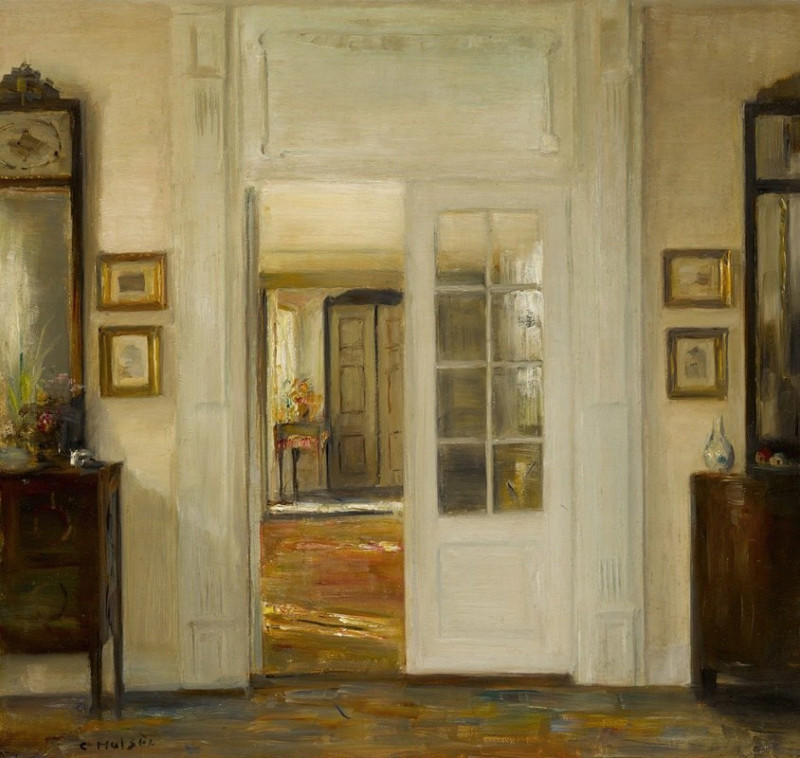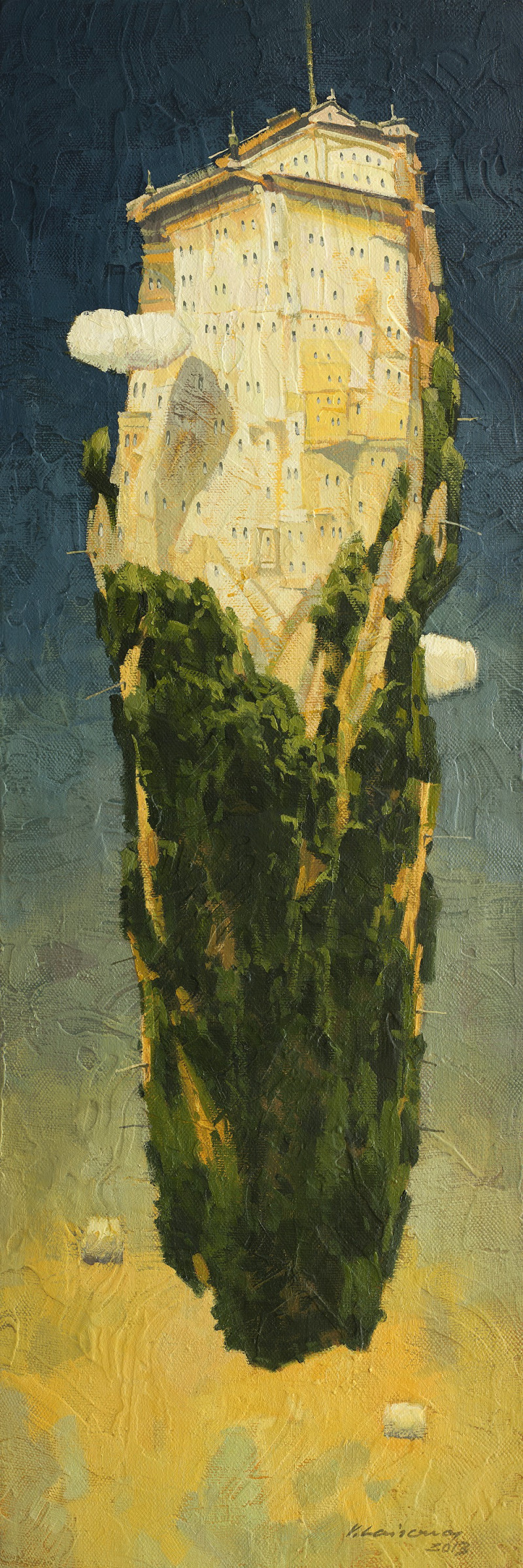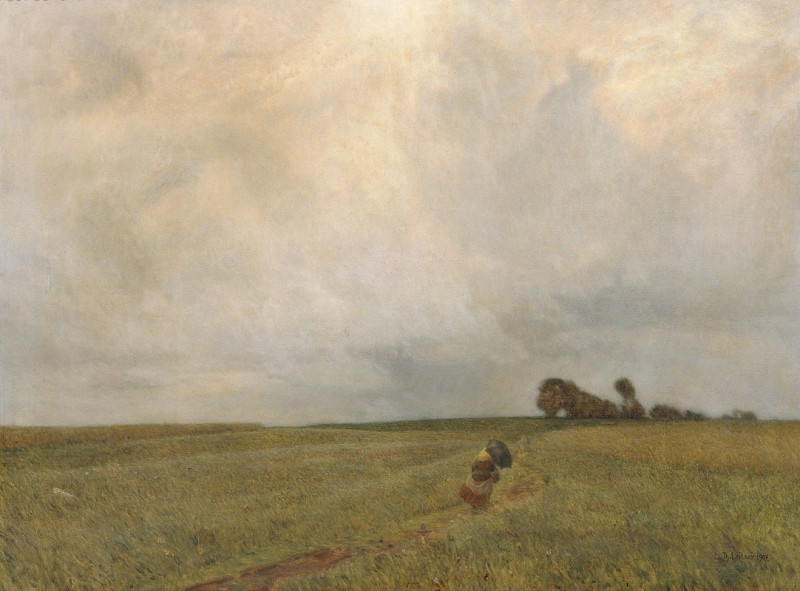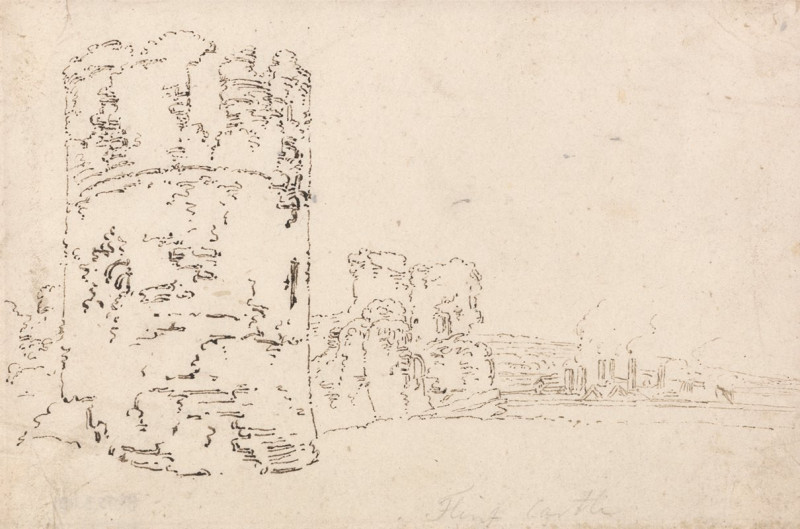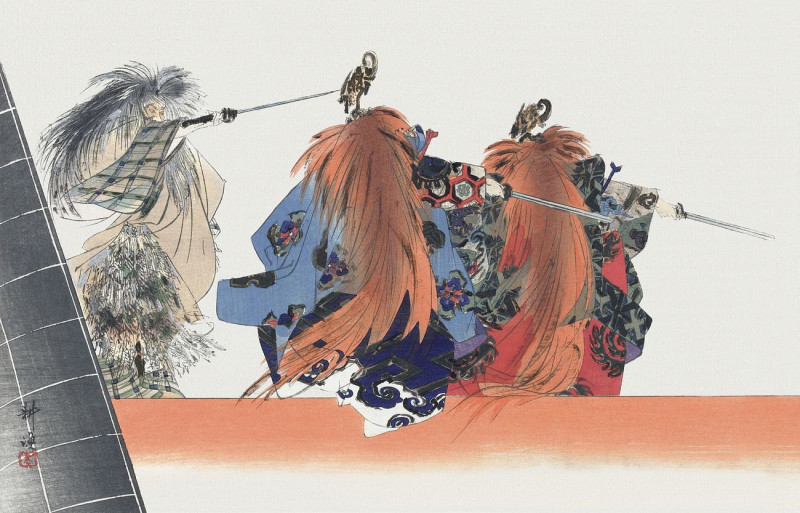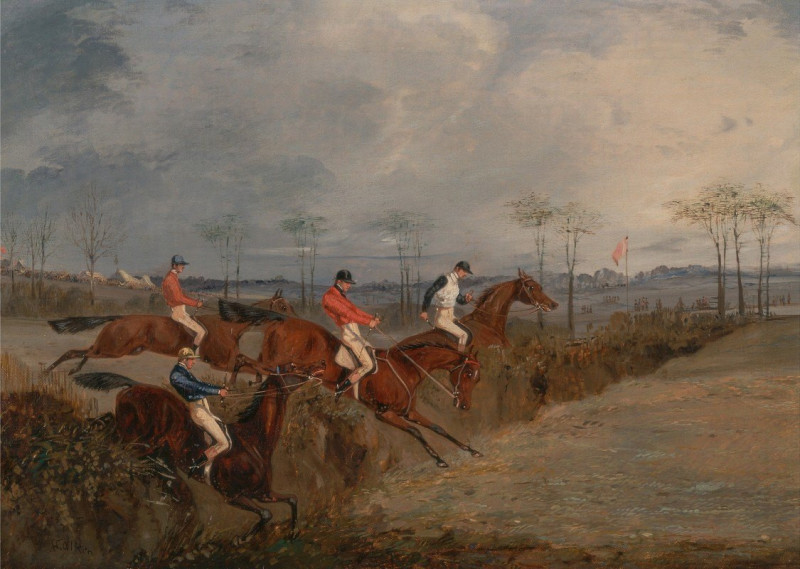Elm Forest in Spring (ca. 1923)
Technique: Giclée quality print
Recommended by our customers
More about this artwork
"Elm Forest in Spring" by Edvard Munch is a vivid and expressive painting that captures the essence of a forest during the springtime. In this artwork, Munch employs a palette of bright, lively colors to reflect the renewal and vibrancy of the season. The scene is filled with tall elm trees whose trunks and branches twist and turn, giving them a characteristic, almost dynamic appearance. Their forms are rendered with thick, fluid lines that enhance the sense of natural growth and movement.The ground is covered with a tapestry of colorful brush strokes in shades of green, blue, brown, and white, symbolizing the blooming flora and the scattered light filtering through the trees. This textural play adds depth and complexity to the scene, inviting the viewer to explore the interplay of light, shadow, and color.In the foreground, there are patches of flowers and emerging plants, depicted in purples, blues, and greens, adding a touch of brightness and life at the viewer’s feet. The composition leads the eye through the forest path, meandering between the trees and into the depths of the woods, suggesting a journey or exploration into nature.Overall, Munch’s painting is not just a visual representation of a spring forest, but an emotional rendering that reflects his personal response to the natural world. It portrays not only the physical landscape but also conveys a sense of the profound and rejuvenating spirit of the spring season.
Delivery
Returns
Edvard Munch (12 December 1863 – 23 January 1944) was a Norwegian painter. His best known work, The Scream (1893), has become one of Western art's most iconic images.
His childhood was overshadowed by illness, bereavement and the dread of inheriting a mental condition that ran in the family. Studying at the Royal School of Art and Design in Kristiania (today's Oslo), Munch began to live a bohemian life under the influence of the nihilist Hans Jæger, who urged him to paint his own emotional and psychological state ('soul painting'); from this emerged his distinctive style.

